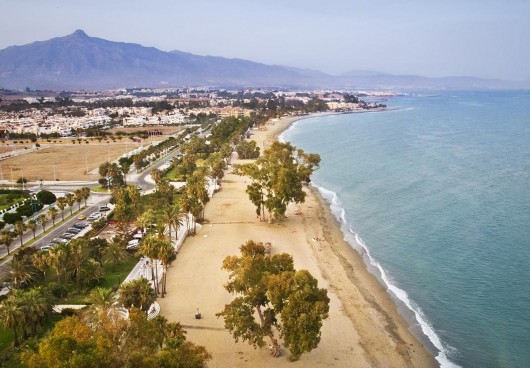According to the latest data released yesterday from the survey of tourist border movements (Frontur), in the first ten months of the year Spain received 52.1 million foreign tourists, which is an increase of 3.1% over the same period in 2011.
However, in October 5.1 million international tourists visited Spain, which is 3.2% less than the same month of 2011, and marks a break with the growing trend experienced throughout the year.
The United Kingdom, Germany, France and the Nordic countries remained the main source markets, while an important growth in Russian tourism was highlighted, of 61.3% in October and 41.3% for the whole year.
El Economista reported that in October, virtually all the main source markets experienced a downturn.
The largest decline was recorded for tourists from Italy (fifth largest market), which fell by 26.4%, while the United Kingdom, the principal market, dropped by 3.4%, breaking the upward trend of recent months.
Andalusia and Madrid were the regions which experienced most of these declines.
The German market (the second market) fell by 1.2% in October, and the French (third market) dropped by 4.4%, while the Nordic countries (the fourth largest market) increased by 1.1%.
However, in the first ten months of the year Italy was the only one of the “top five” source markets to decline, falling 3.7%, as the United Kingdom accumulated a 0.6% increase, Germany +4.3%, France +6.3%, and the Nordic countries increased by 6.1%.
The 3.1% increase in tourist arrivals in the first ten months of the year was largely due to the spectacular growth in Russian tourists of 41.3%, reaching 1.12 million. In October, Spain received 75,749 Russian tourists, an increase of 61.3%.
Also highlighted was an increase in tourists from the United States, of 6.7% in October and 14.7% in the full year, to 1.13 million tourists.
By region, Catalonia, the main preferred destination, saw an increase in tourist arrivals, of 1% in October and 10.5% in the first ten months of the year, while tourist arrivals in the Canary Islands fell 2.5% in October and accumulated a fall of 0.4% for the year.
In October, Andalusia, Valencia and Madrid also experienced declines, while the Balearic Islands grew for the sixth consecutive month (1%), with UK tourists accounting for most of the recorded flow, as Germany, its traditional main source market, also registered a decline.
Airport arrivals dropped by 2% in October, although they recorded a rise of 4% over the year.
Tourists who opted to travel by road also fell in October by 4.1%, but accumulated an increase of 1.4% for the year.
Hotels received fewer tourists in October compared to a year ago (6.1% less), after 18 consecutive months of increases, although they recorded an accumulated increase of 4.5%, while tourists choosing other types of accommodation increased by 3.6% in October (with an increase of 0.6% in the first ten months).
Tourists travelling on a package holiday grew for the second consecutive month (by 10.2%) compared with a fall of 8.7% in tourists who did not choose this type of holiday.



